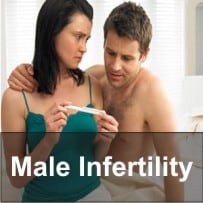 Although most contraception method can protect against unwanted pregnancies, they do not offer the necessary protection against std’s. This post provides details and insight on the nature of STD, its kinds, transfer, and symptoms. This post also gives valuable sexual health details against common misunderstandings about STDs.
Although most contraception method can protect against unwanted pregnancies, they do not offer the necessary protection against std’s. This post provides details and insight on the nature of STD, its kinds, transfer, and symptoms. This post also gives valuable sexual health details against common misunderstandings about STDs.
As effective as modern birth control methods are, most shield you from only one kind of risk: unwanted pregnancies. But, unwanted pregnancies is not the only threat that comes with risky and unprotected sex. practicing unprocted sex also places you in danger of calling std’s and infections. Since condoms are the only known and proven birth control method that secure against STDs and STIs also, a lot of sexual health information can go a long way in keeping yourself safe and uninfected.
What are Sexually Transmitted Diseases?
These are diseases and infections that can be contacted through having unsafe and unprotected sex with an infected partner. Surprisingly, STDs are not only passed on via genital sex. Anal, oral, and vaginal sex are effective indicates of transferring these transmitting viruses and diseases. Virus and bacteria that trigger these diseases and symptoms are passed on through the liquids exchanged during intercourse like saliva, genital liquids, and semen, among others. Sharing non-sterilized needles with other people is also a common cause of the spread of STDs. Blood is also an effective transmitter of these viruses and bacteria especially if it finds its way into open lesions or sores.
What are the kinds of STDs?
Generally, there are two kinds of STDs – treatable and non-treatable. Curable STDs,
which are bacterial in general, are often handled by using medications such as antibiotics. Treatments are often long techniques which can take months or even years. It has also been noticed that getting infected with STDs decreases one’s protection against future infections.
Common cases of treatable STDs consist of gonorrhea, chlamydia, syphillis, trichomoniasis, and vaginal infection.
Non-treatable STDs are are viral infections and diseases that improvement over time and create problems. While most are lifelong conditions, some can be critical and cause loss of life. Treatments and therapies are often applied not for the purpose of treating the infections but for reducing the signs and boosting the body’s immune to problems. Some of the known non-treatable STDs consist of genital herpes, Liver disease Hepatitis B, genital hpv warts, and the Human Immunodeficiency or HIV.
What are the symptoms of STDs?
Signs of STDs may vary among individuals and the severity of the infection. However, some of the common signs include:
* unpleasant pennis discharge
* burning discomfort while urination
* unpleasant smell and changes in vaginal discharge
* discomfort during sex and around the lower abdomen
* blisters, sores, patches, and rashes in the mouth, rectum, or vaginal areas
If one notices any, a mixture, or all of the following signs, medical care should be instantly required.
Key STD Facts
As a controversial subject, there are lots of misunderstandings and incorrect concepts about STDs that can possibly cause more problems. Below is some information on STDs that could create recognition and treatment easier:
* You could contact more than one STD at a time. An STD does not create an individual immune from other STD or from the same disease. In certain cases, having STD could create an individual more vulnerable to calling more attacks or having a relapse.
* STD does not discriminate. Std’s can contaminate anyone from a teenage to a maturing medication dependent; all it takes is one unsecured indiscretion.
* STDs are common. There are many individuals who are have been contaminated with STD or carry an infection strain. Most of these folks are not even over the age of 30.











